By Josh Cosford, Contributing Editor
I vividly remember visiting my stepfather’s auto shop as a kid, where he’d worked on what was primarily American iron. Being the 80s, most vehicles were American-made, so his familiarity with imperial nuts, bolts and tools was understandable. When Japanese cars permeated the market, he was ill-prepared in both knowledge and accoutrement. As a result, he would eschew any vehicle with metric fasteners while recommending to friends and family to avoid those vehicles at all costs.
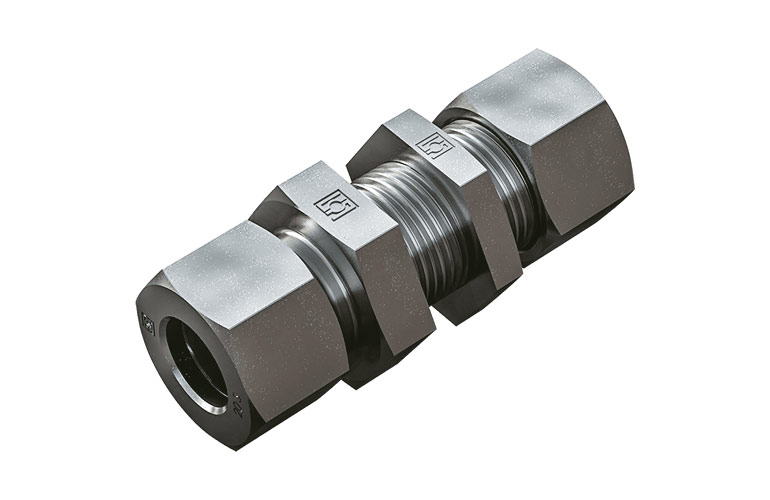
Being Canadian, and with our official switch to the metric system when I was just two months old, I couldn’t understand the hesitancy he had towards what is a much simpler method to measure … well … anything. In fact, I had (and still have) much more comfort with the metric system; its base ten numbers and even decimals are easy to run in my head. However, having recently involved myself in engineering and manufacturing NFPA cylinders, I have grasped common imperial fractions and decimals.
That being said, it’s safe to say our comfort with metric fasteners has increased since it’s likely most American auto manufacturers have made the switch to streamline the sourcing of parts and components worldwide. However, I’m not sure the same can be said of our venerable hydraulic industry. Why are we still so apprehensive about the specification of metric ports and fittings – it’s not hard, I promise.
Should you want to move into metric, I’m sure you’re wondering how complicated your task is should you follow the rainbow into a world of leak-free fittings, easy math and one set of wrenches. This FAQ will answer all your questions about finding that gold pot.
Metric hydraulic fittings are those used in hydraulic systems conforming to the metric measurement system. These fittings connect hydraulic hoses, tubes, and pipes to pumps, valves, and other hydraulic components. They typically feature a threaded connection providing easy attachment to bungs, ports or adapters, coming in various shapes and sizes to accommodate different components in a hydraulic system.
Their threads are generally straight and expressed by the major diameter and pitch, such as M12x1.5. In this case, the outer thread diameter measures 12 mm while the distance between threads is 1.5 mm. Most metric fittings are offered with a 1.5 mm pitch.
What are the advantages of using metric fittings on my machine?
There are several advantages to using metric fittings on your hydraulic system. First, they are designed to be compatible with the metric measurement system, which is widely used in Europe, Asia, and many other parts of the world. This makes finding compatible components on the international market easier, providing more options to work with suppliers in different countries. If you’re building hydraulic machinery here in North America and shipping it overseas, your customer likely specifies metric fittings, which they can source locally. It doesn’t make sense to stock both imperial and metric, so why not convert to metric?
Second, metric hydraulic fittings are often more compact than their imperial counterparts (especially NPT), which can help to save space in a hydraulic system. They also tend to have a higher working pressure and temperature rating than NPT or some ORB fittings, making them suitable for more demanding applications. The O-ring used on straight-thread metric fittings is bonded to the washer, making it harder to extrude than the floating O-ring on O-ring boss fittings. The bonded seal also prevents accidental incorrect seal choice by maintenance personnel, which will leak when too small or extrude when too large.
Finally, metric hydraulic fittings are often less expensive than imperial fittings because they’re manufactured in bulk all over the world, which can make them a more cost-effective option for many applications.
What types of metric hydraulic fittings are available?
Many different metric hydraulic fittings are available, each designed for specific applications and use cases. Some designs are for plumbing into the ports of valves, actuators, or manifolds, while others are meant to mate with metric tubes for plumbing. Some of the most common types include:
Metric Port fittings: These fittings typically feature a male opposed by either a male or female end with a bonded O-Ring in place to create a seal. They are commonly used in hydraulic systems requiring a high-pressure seal and frequently into a port. Be careful; sometimes, these fitting manufacturers use different part numbers for the fitting and seal, requiring you to order separately!
Metric flare fittings: These have a 60° flared end that creates a tight seal with the mating tube when compressed tightly by the nut. They are commonly used in hydraulic systems that require a leak-free tube connection.
Metric DIN fittings: These fittings are similar to flare fittings but use a sleeve and nut to attach to the tube and are commonly used in hydraulic systems in Europe and other parts of the world.
Metric adapters: These fittings provide an interface to attach metric plumbing to imperial ports or vice versa. They may have any of the above metric standards opposed by NPT, O-Ring Boss, O-Ring Face, JIC, BSPP, or any other design with inch dimensions.
What materials are metric hydraulic fittings made from?
Metric hydraulic fittings, just like their imperial counterparts, come from a variety of different materials, the likes of which depend on the specific application and use case. Some of the most common materials include:
Stainless steel: This is a common material for metric hydraulic fittings, as it offers excellent corrosion resistance and high strength. 304SS offers great overall protection from ambient water and salt, but for corrosive chemicals, look for fittings in 316SS.
Brass: This is a softer material often used in low-pressure hydraulic systems, as it is less expensive than stainless steel. Rarely used in hydraulics, you tend to see brass more commonly in pneumatic systems.
Carbon steel: This is a strong and durable material that is commonly used in high-pressure hydraulic systems. More often than not, you see carbon steel plated in zinc or nickel to increase corrosion resistance.
Aluminum: This lightweight material is often used in mobile hydraulic systems, where weight is a concern. They’re also used in specialty applications, such as fuel lines, for example.
How do I select the correct metric hydraulic fitting for my application?
Selecting the suitable metric hydraulic fitting for your application requires careful consideration of several factors, most of which are typical questions asked when designing systems here in North America.
First, you should consider the pressure and flow requirements, which dictate the size and type of hydraulic hose, tube, or pipe you are working with. Plumbing size increases along with flow rate, and you must factor in how much pressure drop is created for any given flow path. Return lines, for example, are larger to reducer the velocity of the fluid, thereby limiting backpressure.
With larger plumbing comes larger fittings and adapters, so consider how size affects your available choices. An M52x1.5 fitting may not be available in 316SS, for example, so you may have to make compromises or find creative solutions.
High pressure also reduces your list of available options. Typically, only carbon and stainless steel provide ratings over 3,000 psi. However, the inherent strength advantage of small-diameter fittings may allow some smaller aluminum and brass sizes to handle high pressure. Once you climb past 5,000 psi, steel provides the most robust solution.
Just as with traditional inch fittings, the choice of adapter must suit the needs of the system layout. By selecting more commonly available fitting styles, you ensure the technician can intelligently locate components using the required elbows, tees, and adapters to provide the most space-efficient installation possible. Consulting with a hydraulic expert or supplier can help you select the correct fitting for your needs.
Can metric and imperial hydraulic fittings be used together?
While metric and imperial hydraulic fittings are not designed to be used together, there are adapters available that can make it possible to connect them. However, it is essential to use caution when adapting from one to the other or to assume they fit without confirming. This is because the fittings’ threads and dimensions are incompatible, which can lead to leaks and other issues.
It’s important to note that using adapters can add additional complexity and potential points of failure to a hydraulic system. Therefore, it’s recommended to use fittings of the same type and size whenever possible to ensure optimal performance and reliability.
If you follow the advice in the preceding FAQ, you will find that selecting metric fittings and fabricating hydraulic machines is no scarier than working on a 1978 Honda Civic.

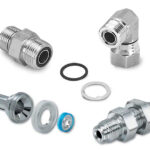
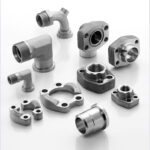
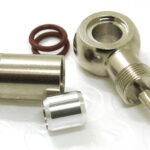
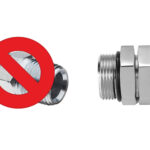
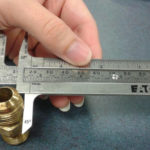
Leave a Reply